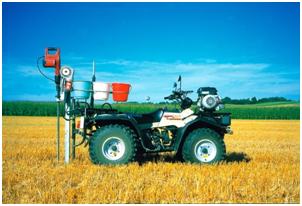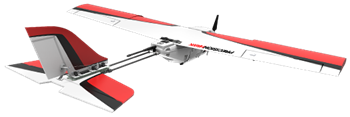Advances in
eISSN: 2373-6402


Editorial Volume 3 Issue 1
Department of Bioscience Engineering, University of Antwerp, Belgium
Correspondence: Frank Veroustraete, Department of Bioscience Engineering, University of Antwerp, Belgium
Received: January 05, 2016 | Published: January 11, 2016
Citation: Veroustraete F. Is there a future for precision farming with a smaller environmental impact? Adv Plants Agric Res. 2016;3(1):1-2. DOI: 10.15406/apar.2016.03.00080
How can precision farming evolve in such a way that the Earth continues providing mankind with food for an exponentially growing world population? At what point in time will we be able to designate agriculture, as sustainable agriculture? Also the provision of raw materials, clothing and bioplastics in an economy that makes more and more use of biological materials is an important issue for a transition into a durable future for world population as well as agriculture.
Towards Precision Farming
Some agricultural experts are confident that harvests can be increased and environmental impacts reduced. Especially a decline in the use of pesticides and fertilizers is in this context an important objective. This objective could be reached especially by using ‘monitoring techniques’ or ‘guided control’, which means that action is taken only insofar as it is urgently needed.
While pesticides were and still are used at regular intervals, independent of plant health status , this practice is applied in durable agriculture1 only if the corresponding disease is diagnosed and may reach and unacceptable level of damage and harvest loss. The observation and monitoring of crops takes an important place in this approach. As a sick person is monitored in hospital with a panoply of monitors, to enable a therapy for healing to be developed, also crops have to be to be monitored to enable the establishment of their health status, and especially whether their health status is alarming or not. Is a disease imminent? Is damage occurring or can harvest reduction be expected?
If the answer is yes, only then should curative treatment be started. Regular pesticide application is not part of the arsenal of precision agriculture. The consistent application of pesticides and fertilizers does not belong to the development of precision farming, e.g., durable agriculture. The future of durable global agriculture is not the general and sometimes unnecessary use of an agent as Roundup which should be greatly reduced or eliminated for use in any case. On the contrary, improved monitoring and management based on a ‘big data’ approach will improve yield and imply a reduction of pesticide use as well as excessive fertilizer application. What is needed is fertilization in quantities optimal for the crop to deliver optimal harvests. This certainly does not mean excessive fertilization. Pests and diseases in crops are often and even due to mismanagement and a lack of knowledge on the health status of a crop. Though human medecine is in an advanced stage of development, plant ‘medecine’, has barely started in agriculture.2
“Precision farming is a partial answer to lack of ‘plant medicine’. When developed and impelmented, yield will be increased, while environmental impacts will be reduced, e.g., precision farming is a transformation of classical ‘chemically based’ agriculture into durable agriculture’. Experience shows that the most efficient farming systems have the smallest environmental impact. This is counter-intuitive, but easily explained. The future of agriculture lays partially with organic farming. Intensification based on monitoring, using modern techniques such as remote sensing, new agricultural techniques like GPS controlled tractors for fertilizing and carefully dosed disease treatments, fosters a reduction in environmental damage and a pathway to durable agriculture (Figure 1).

In Europe farmers lag behind with respect to their US colleagues. Essentially the investment for the new techniques is too high for mostly small farmers (60% less than 5ha farms) in Europe. If European agricultural policy does not change in the near future, the EU market will pretty soon be swamped with US agricultural products, produced with a minimal environmental impact and based on a much more durable approach in cropping. I leave GMO’s out of this Editorial for the time being. They are not accepted in Europe. Question even is, whether with durable farming GMO’s will still be needed?
With intensification, high productivity and good management on quality farmland also more space for natural landscapes will be created. Therefore agricultural practices based on the application of monitoring, well dosed fertilization and pesticide application or good alternatives for ‘chemical agriculture’ is a prerequisite for this track to be followed. Agricultural footprints will go down, where they now still give rise to groundwater with high nitrate levels especially in the BENELUX countries, with their dense non-land-based agriculture and especially livestock and cattle breeding, and a lot of fossil fuel consumption. Where are the first electro-tractors? In Norway?
UAV’s and Remote Sensing
For permanent improvements with respect to durable agriculture, we should not forget methods including the application of Earth Observation (EO) technology especially with the recently upcoming more and more technologically advanced UAV’s (Figure 2).

A drone equipped with a multispectral camera is already in operation in the Netherlands. The content of nitrogen in the plant is measured with it, as well as the amount of nitrate in the crops and the number of plants per hectare. The camera sees how wet or dry the plot is. UAVs are seen as a continuing trend. More and more service companies start offering services in which crops can be monitored. More and more applications are developed. Also, farmers see great potential in these unmanned devices that can scan crops. It looks like big data and drones are in the agricultural business to stay and foster the transformation from classical agriculture into a durable one. Without a doubt, Clean Technology will offer plausible solutions to develop durable agriculture within the coming years.
None.
The author declares no conflict of interest.

©2016 Veroustraete. This is an open access article distributed under the terms of the, which permits unrestricted use, distribution, and build upon your work non-commercially.